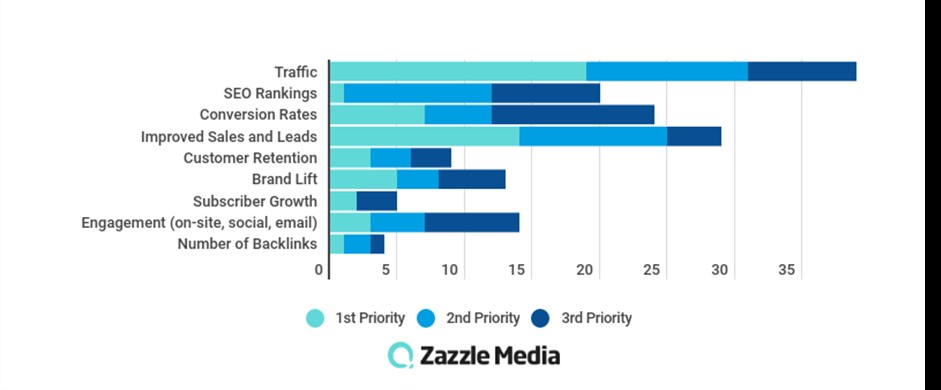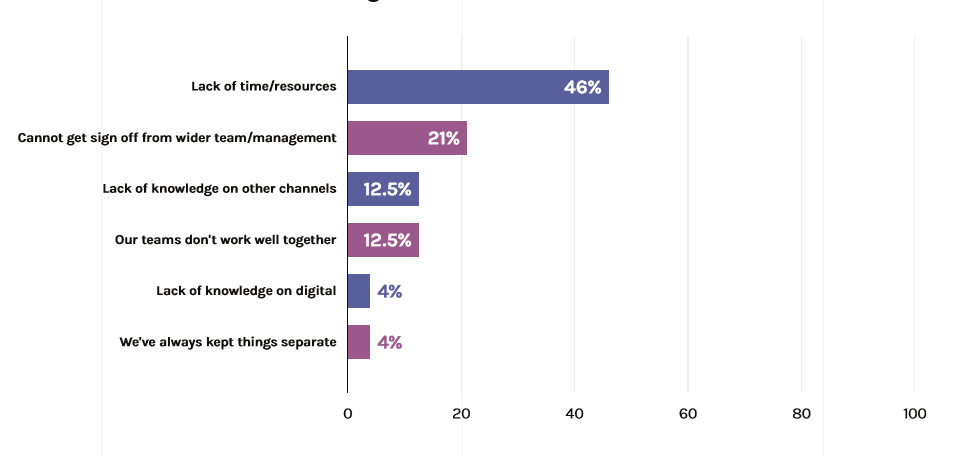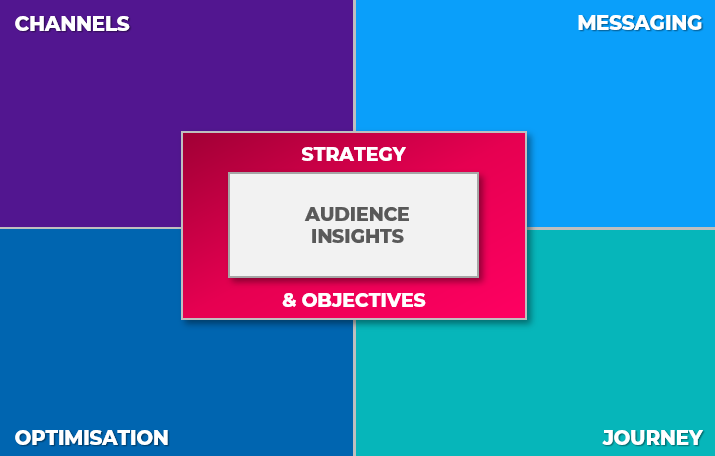In-house marketers have big expectations for their content marketing but in order to realise those expectations, they need a broader outlook on what content is, and what it can do.
Earlier this year we sat down with fifty in-house marketers to get an idea of what their priorities and what their challenges were for 2020 and beyond. These marketers represented a wide range of leading brands across a broad range of sectors but what they did have in common was that they were all invested in content marketing as part of their marketing strategies to different degrees.
Following a lot of interesting and lively conversation, we asked these marketers to choose their top three priority measures when it came to their content marketing goals.
What followed was not in itself surprising, but does it highlight a potential disconnect between what content marketers want to achieve, and how empowered and enabled they are to achieve it?
Traffic, sales and lead generation are the big priorities

Unsurprisingly, marketers see traffic, sales and lead generation as their biggest priorities for content. More than a third of the people we asked saw traffic generation as their number one priority, and the vast majority had that goal as one of their top three. More than half had ‘improved sales and leads’ as one of their top three priorities.
What makes those responses particularly striking is the way in which reach is considered significantly more important that audience and customer retention.
It’s clear that many marketers are seeing content as a top of funnel initiative. Just nine of the marketers we spoke to saw customer retention as one of their main priorities for content marketing, and only one said it was their top priority.
This result doesn’t seem to be an anomaly either. For a number of years we have run a State of Content Marketing survey, polling a much broader audience, which has consistently told a similar story. In the most recent survey, just 10% of respondents mentioned retention as a key KPI, vs 66% suggesting that their main priority was awareness.
Silos at big brands undermine the effectiveness of content
Seeing these responses from our panel of marketers, we wanted to understand the barriers to helping them to achieve their stated goals. We also wanted to investigate where those challenges were having an effect in leading those aims.
Looking back at the responses to our State of Content Marketing survey around the challenges faced by content marketers, we also see familiar challenges occurring year after year. But amongst the headline challenges, there is a core theme of problems that suggest a fundamental cultural problem.

Whilst time and resource are often cited as the biggest challenges facing marketers when it comes to their content marketing strategy, there is an underlying suggestion that a lack of integration and the ‘siloed’ nature of many organisations is a core issue in getting content marketing to work as effectively as it could.
Getting approval from management, a lack of appreciation of other channels (digital in particular) and potentially fractious relationships between teams were all core issues flagged in our survey. What we found was that many larger brands seem to struggle with separation between departments which should be working closely together, such as brand, acquisition, merchandising and eCRM, creating a very slow and fragmented approach.
Those challenges and cultures may suggest why many content marketers have tended to focus disproportionately on short-term, high-numbers metrics such as traffic and leads, rather than the whole gamut of marketing objectives. When 48% of marketers are suggesting to our surveys that wider teams still don’t understand the value of content, has it become easier to win the argument when armed with short-term performance metrics, at the expense of goals that could have a much bigger long-term impact on the business?
By focusing excessively on reach, are marketers undermining the potential of their content investment?
It’s clear that there are still some considerable knowledge gaps throughout organisations around how to get the most value out of an investment in content marketing. Those gaps, allied to the oft-cited lack of resources, could arguably be encouraging (either knowingly or inadvertently) marketers to neglect objectives that could drive significant value to the business.
It is disappointing, if unsurprising, to see customer retention and engagement metrics score low down the priority list. This isn’t just a takeaway from our meeting with marketers earlier this year, but a consistent trend from our surveys of content marketers over recent years.
What tends to be lacking, and what we try to impress with our clients and in our training sessions, is a centralised strategy that works across teams to maximise the value of content assets. This model allows even a relatively small number of content assets, produced by a small or under-resourced team, to have an impact that is greater than the sum of its parts – creating a consistent brand message that can be deployed across all channels for both customer acquisition and retention.

This model also helps marketers to ‘win the argument’ with those departments that may not necessarily or naturally buy-into content marketing as a tactic.
What this model does at its core is provide a core understanding of the type of audiences and audience segments that the business can and should be reaching. Building a strategy around those segments, marketers can then make the case for how to approach each of those audiences – the messages that they respond to, where those messages need to be, the role that content plays in the context of the customer journey, and how to refine and optimise those messages (and their deployment) for commercial benefit.
The key point however is that this model applies to all audiences and all objectives – it isn’t just a model for pursuing new audiences and filling the top of the funnel, but for nurturing, converting and retaining audience segments throughout that funnel. It makes it easier for content to be seen as more than just a ‘funnel filler’ and instead, as a core tactic that applies throughout the organisations marketing operation.
This is something that is going to be increasingly important in the current climate. Whilst the need to think much more broadly about content is not a product of or as a result of the COVID-19 pandemic and the economic realities that have followed, the pandemic is likely to make this mindset much more important. It’s widely expected that consumers will reign in spending even as society returns to something resembling a normality. New customer acquisition will become more difficult. Retaining existing customers, upselling and reducing churn will become much more important.
Time and resource challenges will always persist. But by adopting a wider focus for your content strategy, you can overcome many of those cultural barriers and in turn generate an even bigger impact from what may actually be a small, but very focused, volume of content.
Sign up for our monthly newsletter and follow us on social media for the latest news.





 Proudly part of IPG Mediabrands
Proudly part of IPG Mediabrands